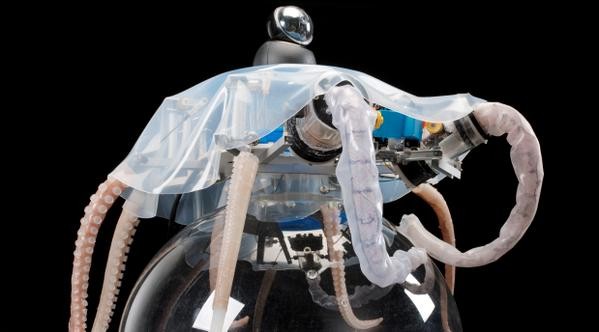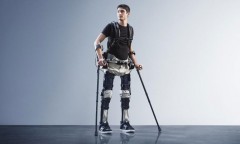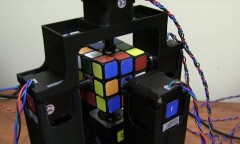By Steve Pak, | February 06, 2016

Soft Robot Octopus
A robot octopus has been developed by a robotics researcher by modeling it after a soft sea creature her father caught for her in 2007. The Italian scientist studied how the cephalopod grabbed little fish and crabs in a saltwater tank. Her team then built soft robot prototypes made mostly of elastic materials that mimicked the eight-armed animal's motions and squeezed into their environments.
Like Us on Facebook
Cecilia Laschi is a robotics researcher working at the Sant'Anna School of Advanced Studies in Pisa, Italy. Her robotics team created many prototypes to build a mechanical tentacle with wires and springs inside that worked like an octopus' muscles, according to Nature.
After many prototypes of the robotic octopuses it could shrink, lengthen, and curl like the real animal's limbs. Laschi explained it was a totally new method of building robots.
The new soft robots built during the last decade are unequivocally different machines than hard-bodied robots. However, humans and animals with hard skeletons often inspire them.
The machines' rigid limbs can bend around fixed joints. However, they require complex software and large amounts of data to avoid banging into objects around them.
In fact, the soft robots still have problems in certain situations that cannot be predicted by a math formula. They include interacting with people, new objects, or bumpy ground.
Scientists had to build new technologies to help bendable materials make strong movements. They also had to create new ways to observe and predict their actions.
Robotics researchers have already developed many types of soft robots. They include robot caterpillars, jellyfish, and fishes.
Ten soft-robotics teams will compete from April 29 to 30 in an international robotics challenge. The RoboSoft Grand Challenge will take place in Livorno, according to Outer Places.
This robot challenge will include three venues including terrestrial, underwater, and manipulation that require different tasks. For example, the requirement of the manipulation task is for the robot to pick up an object, move the item to a location, and use a door handle.
The new soft robots could have several real-world uses. They include factory robots that grab objects without being programmed, home health aids, and rescue workers that can fit into tight spaces.
-
Use of Coronavirus Pandemic Drones Raises Privacy Concerns: Drones Spread Fear, Local Officials Say

-
Coronavirus Hampers The Delivery Of Lockheed Martin F-35 Stealth Fighters For 2020

-
Instagram Speeds Up Plans to Add Account Memorialization Feature Due to COVID-19 Deaths

-
NASA: Perseverance Plans to Bring 'Mars Rock' to Earth in 2031

-
600 Dead And 3,000 In The Hospital as Iranians Believed Drinking High-Concentrations of Alcohol Can Cure The Coronavirus

-
600 Dead And 3,000 In The Hospital as Iranians Believed Drinking High-Concentrations of Alcohol Can Cure The Coronavirus

-
COVID-19: Doctors, Nurses Use Virtual Reality to Learn New Skills in Treating Coronavirus Patients











